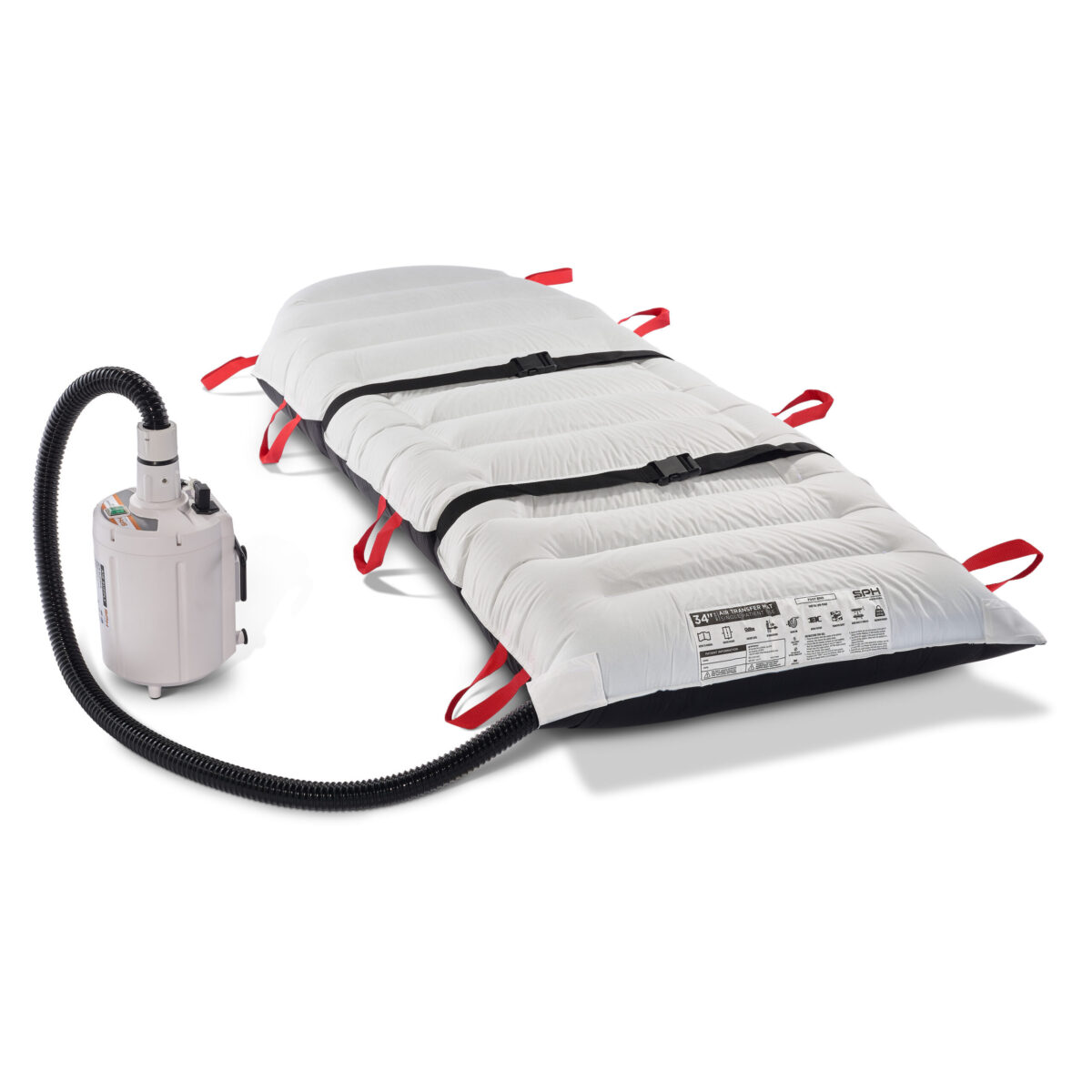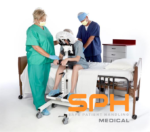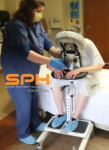You may think hospitals are safe workplaces, but they are actually among the most dangerous. In fact, a study by OSHA found that, at hospitals, 7 out of 100 full-time employees sustain an injury. Medical staff in hospitals must perform strenuous physical activity all day long. In both the ICU and OR, the medical team handles lateral transfers of patients who require total care. It is not unusual for a nurse to transfer a patient from bed to CT table, OR table, gurney, and back again. Nursing staff perform this task dozens of times, along with patient repositioning, turning, and boosting, making it clear why nurses are prone to repositioning injuries.
What are lateral transfers?
Lateral transfers and patient repositioning involve moving a patient from one surface to another, like a bed to a gurney. Most of this work is done manually by a few medical staff members, placing them at risk for injury. In fact, the American Nursing Association estimates that nurses move an average of 1.8 tons per eight-hour shift. According to the Bureau of Labor Statistics, the high movement level among medical professionals puts them at risk for 31.1 percent more musculoskeletal disorders. Due to the friction between sheets and boards, this makes this task unsafe. Improper positioning can lead to injury or even death for the patient. All departments of the hospital perform transfer and repositioning tasks. The intensive care unit, emergency room, radiology, medical units, and surgery are among them.
The Costs and Consequences of Injury Due to Lateral Transfers
The consequences of occupational musculoskeletal injuries are detrimental to nurses. Beside the cost of medical expenses, litigation, disability compensation, and nursing injuries are also expensive due to absenteeism, chronic pain, functional disability, and turnover. Approximately 20% of nurses leave direct patient care jobs for safety reasons. According to statistics, the healthcare industry spends roughly $20 billion annually on direct and indirect costs associated with back injuries. In addition, employees who suffer from pain and fatigue may be less attentive, less productive, more prone to further injuries, and may consequently have a negative effect on the health and safety of others.
The Federal Government is aware of the increased risk of repositioning injury and nursing injury in the medical industry. In 2015, the national government passed new legislation governing patient handling to protect nurses and healthcare workers. This Act aims to make healthcare facilities a safer place to work for caregivers.
There are options to reduce forces and the risk of injuries, making it safe for medical staff. One option is air transfer devices. In this article, we will define the devices and highlight their benefits.
What are Air-Powered Lateral Transfer Systems?
An air-powered system is used to elevate patients in bed, reducing another potentially hazardous task known as “boosting a patient” or repositioning. The system comprises a hose, an inflatable pad, an easy-to-use air supply, and a power cord. A pump is inserted into the pad when the patient is positioned on the air-powered lateral transfer system. As soon as the mattress is inflated, the patient can be moved. The air-powered systems include straps that hold the patient securely during lateral transfers. They have convenient handles that make it easy for nurses to transfer patients between surfaces.
In most cases, patients’ lifting or pulling weight is reduced to about ten percent of their body weight. There is virtually no friction under the pad when moving from one surface to another, so moving patients can be done with minimal caregiver exertion. This reduces nurse injuries.
Benefits of SPH Medical’s Air Transfer System
A hospital’s primary concern is protecting the long-term health of its employees. Air-powered systems provide a solution that requires less labor from hospital staff. Two staff members can transfer a patient safely rather than waiting for at least 4 staff members to perform the transfer. The air-powered systems also provide a safer, less strenuous, and more dignified way for patients to be handled. The Air Transfer System allows patients to float between surfaces easily. There is less risk of bruises, bumps, or manual handling during transfers. Using these systems can drastically reduce the amount of stress on nursing staff. This reduces the risk of injuries from predictable and repetitive patient handling tasks. Healthcare facilities are investing more in disposable pads considering the recent COVID-19 pandemic concerns.
Single Patient Use Air Transfer Mattress
Having a single patient use air transfer mattress is the backbone of any safe patient handling program. Why? It solves the high-risk and high-frequency manual patient handling tasks. This mat aims to reduce the risk of hospital-acquired infections by reducing cross-contamination and solving the laundry dilemma (things frequently get lost in the laundry or take days/weeks to return to the unit!) It creates a thin air cushion beneath an inflated mattress that reduces friction and allows patients to float. The benefits include:
- Inventory management is easier
- Accessible to nurses
- Eliminates the need to do laundry
- Reduce the risk of infection and cross-contamination
- Proven and cost-effective.
- Breathable and can remain under patients for a long time
Conclusion
Transferring patients is one of the most common tasks performed by hospital personnel. This can be tricky work, especially when the forces involved in these lateral transfers are high, posing a significant risk of musculoskeletal injury for caregivers. Caregivers can avoid injury by using friction-reducing devices like the SPH Medical Air Transfer and Positing System. These devices reduce the force required to complete the transfer and make this task much safer.



